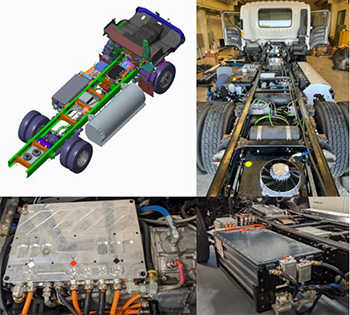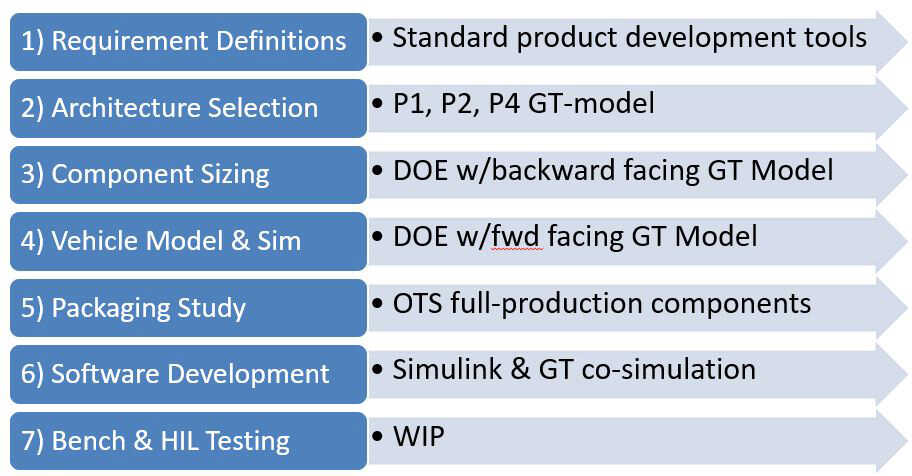Background
The National Renewable Energy Laboratory (NREL) awarded SwRI a project to develop a natural-gas fueled medium-duty truck with a hybrid powertrain. The objective of this project was to further the state-of-the-art for natural gas-fueled vehicles in the medium and heavy-duty markets, as well as hybrid powertrain technology in that same market space. The deliverables for this project were to create a medium-duty natural gas hybrid demonstration vehicle, reduce green-house-gases by 25% relative to the diesel baseline, and achieve the anticipated 2027 0.02 g/bhp-hr NOx regulation.
Approach

Figure 1: NREL Vehicle Model vs. Actual Build.
This PDIR project created the processes that define the system-level requirements for the control algorithms utilizing industry standard engineering tools, develop and implement the performance and diagnostic algorithms, and verify the software via software-in-the-loop (SIL) and hardware-in-the-loop (HIL) testing capabilities.
The funding to support this PDIR—and its two predecessors (R6064 and R6121)—has generated IP associated with the development of a toolchain, processes, and methodologies required to identify an optimal hybrid powertrain system, both in configuration and size. A simulation environment was created to support the development of the software control system in the absence of physical hardware. Finally, the developed software was further validated on vehicle via HIL testing.
Accomplishments
The diesel baseline vehicle has been fully converted into a natural-gas P2 hybrid. All hardware, performance algorithms, and diagnostics have been verified via SIL and HIL testing. The vehicle is currently operating on B87’s heavy-duty chassis dyno to quantify the performance and emissions improvements of this vehicle relative to its diesel baseline.

Figure 2: Process & Toolchain Flow Chart.
